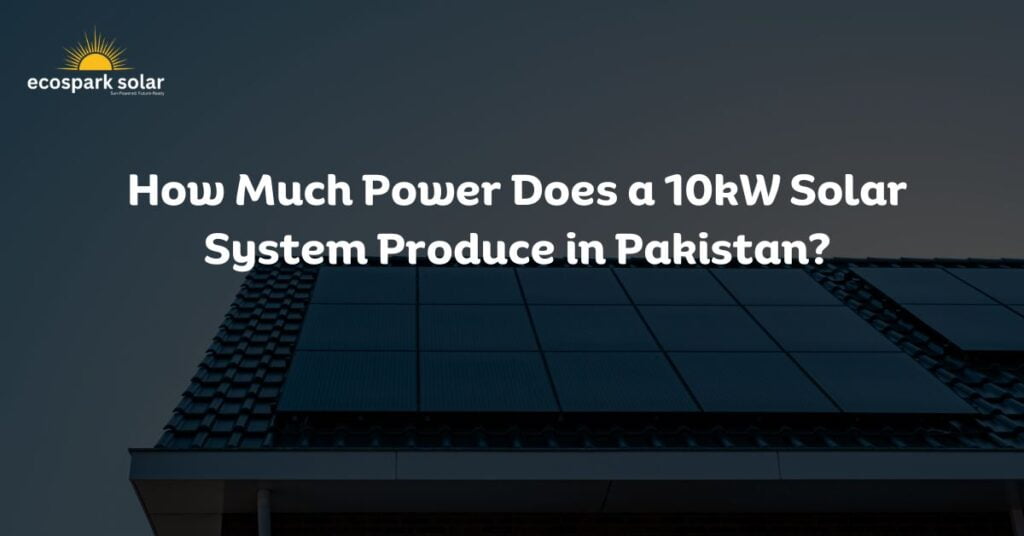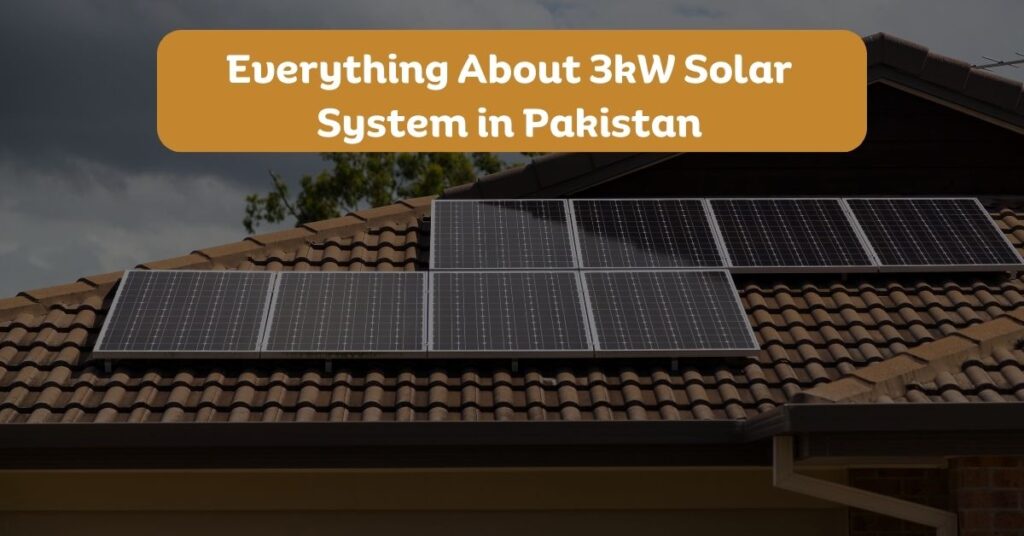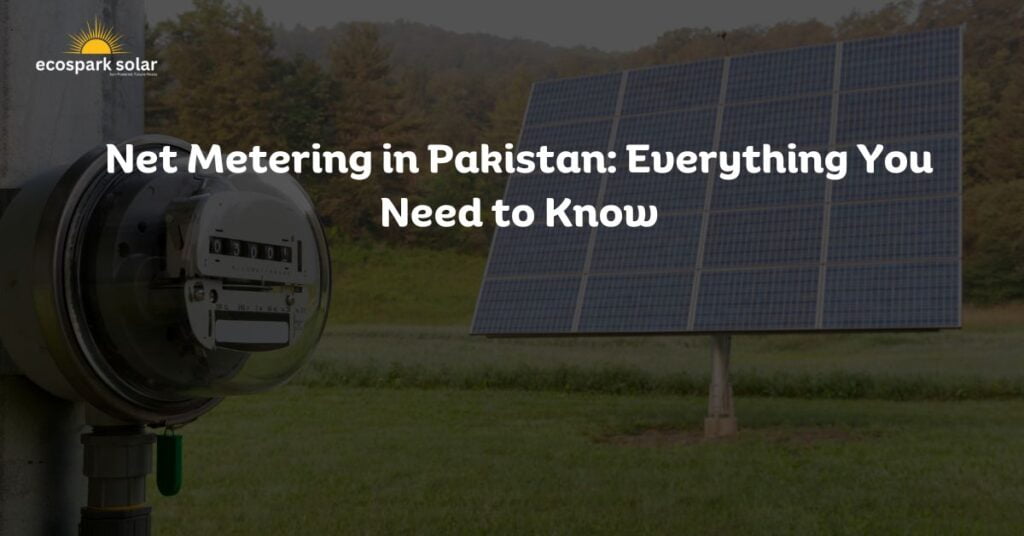10kW solar systems are designed for larger households, with around 5 bedrooms and higher energy needs. Other than essential appliances, they can power a couple of air conditioners, water pumps, refrigerators, washing machines, 3 LED TVs, etc.
Also, a 10kW solar system would have at least 19-20 panel, so the roof space must be large enough to fit in all the panels properly.
If a 10kW solar system is what you have decided to install, it is natural to ask: how much power does a 10kw solar system produce in Pakistan?
This is an important consideration. Knowing how much electricity your system can generate would help you correctly size your solar system. And that’s what we will be discussing today.
Specifically, we will explore the following aspects of a 10kW solar system:
- How to determine the energy output of a 10kW solar system?
- How much power does a 10kW solar system actually produce in Pakistan?
- Factors influencing the production capacity of a 10kW solar system.
- Electricity production of a 10kW solar system in various cities of Pakistan, including Islamabad, Karachi, Peshawar, Quetta, Lahore, and more.
- How to optimize the energy generation of a 10kW solar system?
And more.
But first, let’s delve into these factors and gain a better understanding of how they impact the power production of a 10kW solar system.
Factors Influencing Solar Power Production of 10kW Solar Systems
The power output for 10kW solar systems depends on various factors. Even with similar specifications, they would produce different amounts of energy in different locations. And at times, two different systems would produce different energy in the same location.
Why is it so?
It is because of some underlying factors, some of which we have listed below:
Solar Irradiation Levels in Your Area
First the amount of sunlight a solar system is exposed to. It is the primary determinant of how much power it is expected to generate. In Pakistan, the number of peak sun hours ranges from 4 to 7 kWh/m2/day, which is ideal for generating electricity. Four peak sun hours are considered suitable for solar energy generation, but the higher, the better,
However, the availability of sunlight can vary depending on the season and location within Pakistan. For example, Islamabad receives around 5.5 peak sun hours; Skardu, on the other hand, receives around 3.4.
Note one thing, however. Sun hours doesn’t mean the presence of sun in the sky. In Pakistan, the sun rises at around 4.30 in summers and sets around 6.30pm in the evening. Does it mean there 4 sun hours? No. Sun hours are those hours where solar systems effectively generate electricity and those hours are only 5 to 6 – between 10 to 4 in summers and fewer in winters.
Read more about it in our comprehensive discussion on the solar irradiation levels in Pakistan.
Efficiency of Solar Panels and Inverter
The next thing is the efficiency of solar panels. In Pakistan, the average efficiency of solar panels is approximately 18%, though newer panels offer around 20% efficiency. So,if you have a good quality solar panels, like from Longi, Jinko. Canadian, etc., and are A-Grade panels, the power generated would be steady. Secondly, inverters must be of high quality and should have above 97% efficiency. If panels generate electricity, but the inverter cannot convert it fully, that would mean low power output.
At Ecospark, we always recommend our clients opting for A-grade panels from tier-1 brands—they ensure higher efficiency and optimal system performance.
| You May Like to Know: How Much Does a 10kW Solar System Cost in Pakistan? |
Panel Orientation and the Tilt Angle
The orientation and tilt angle of solar panels have a substantial impact on the power production of solar systems. In Pakistan, the ideal orientation for solar panels is south-facing at 180 degrees. The tilt angle, on the other hand, should match the latitude of the installation location, which ranges from 20 to 30 degrees in Pakistan. To give you a perspective, we install panels in Islamabad at 20-25 degrees—in some cases, we may go low or higher, depending on which season we want to optimize the energy production for.
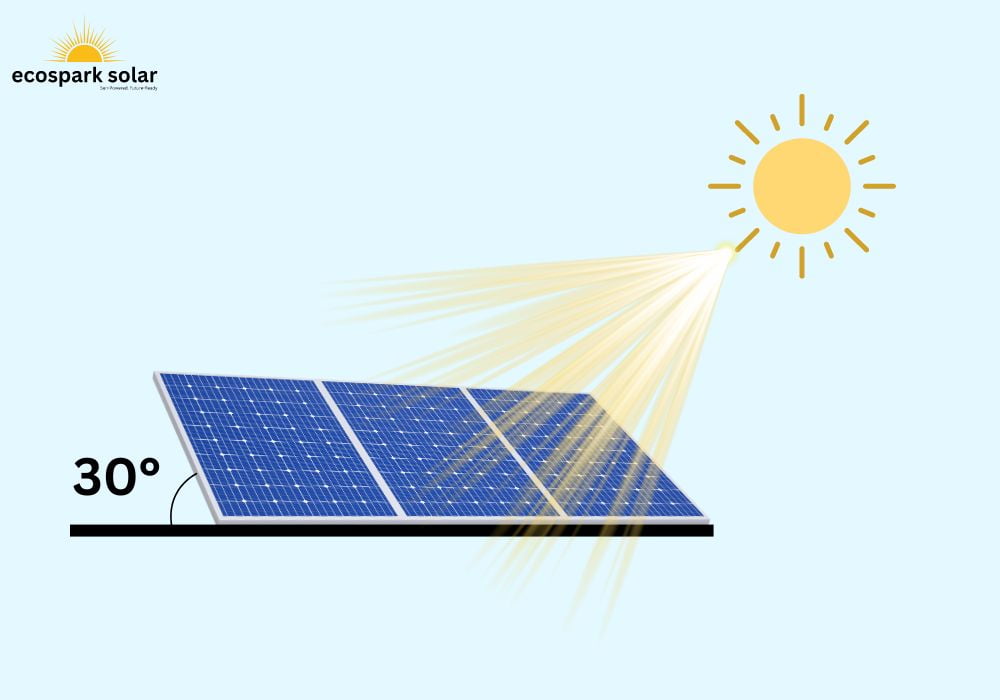
Shading and Obstructions
Shading from nearby structures, trees, or other obstructions can diminish the power output of solar panels. Installing panels in areas with minimal shading is crucial for maximizing energy production. If shading is unavoidable, measures can be taken to minimize its impact on the system’s performance, such as using micro-inverters—if they are available in the market. So far, they are not available, so you will have to look for some alternative solutions.
Read about how micro inverters minimize shading in this article on different types of solar inverters.
A solar system for everyone.
We’re customer-centric; we will find you a solution within your budget. Whatever your project size, you can always save with Ecospark Solar.
Dust and Debris
Accumulation of dust, debris, or bird droppings on solar panels can reduce their sunlight absorption. Properly cleaning and maintenance of solar panels are essential to ensure optimal performance and maximize energy generation.
Now that we have discussed the factors influencing power production, let’s evaluate the power production potential of a 10kW solar system.

How Much Power Does a 10kW Solar System Produce in Pakistan?
Considering the factors mentioned above, a typical 10kW solar system in Pakistan can generate between 34 and 50 kWh of electricity per day, translating to approximately 1000 to 1500 units per month. This capacity makes a 10kW solar system suitable for powering larger homes or businesses that consume around 1000 to 1200 kWh of electricity monthly. Such a system can easily handle appliances like refrigerators, air conditioners, and other electrical equipment.
But how did we calculate this output?
To calculate the energy generated by a single solar panel, the following formula is used:
| Daily production of a solar panel = Solar panel capacity x Peak sun hours x Efficiency factor |
For a 10kW solar system, assuming 5 peak sun hours and an efficiency factor of 0.8, the daily production would be:
| Daily Production of 10kW System = 10,000 watts x 5 x 0.8 = 40 kWh (units) |
Actual power generation may vary depending on factors such as location, weather conditions, and system efficiency. For instance, in areas that receive 6 sun hours, the power produced per day would be 48 kWh (units).
Similarly, keep in mind that the number of units generated could be slightly less in winter.
To determine the monthly production, simply multiply the daily generation capacity by 30:
| Monthly Production of 10kW System = Daily Production x 30 = 40 x 30 = 1200 kWh (units) |
Power Generation of a 10kW System in Different Pakistani Cities
The power generation potential of a 10kW solar system may vary slightly across different cities in Pakistan due to variations in solar irradiation levels.
Here’s an overview of power production estimates in major cities:
How Much Power Does a 10kW Solar System Produce in Islamabad?
A 10kW solar system in Islamabad/Rawalpindi can generate an average of 40-48 kWh of electricity per day or approximately 1500 units per month. With favorable solar conditions and the availability of net metering, Islamabad is all set for the solar revolution. Also, since the load shedding is minimal, it would make all the sense to install an on-grid system.
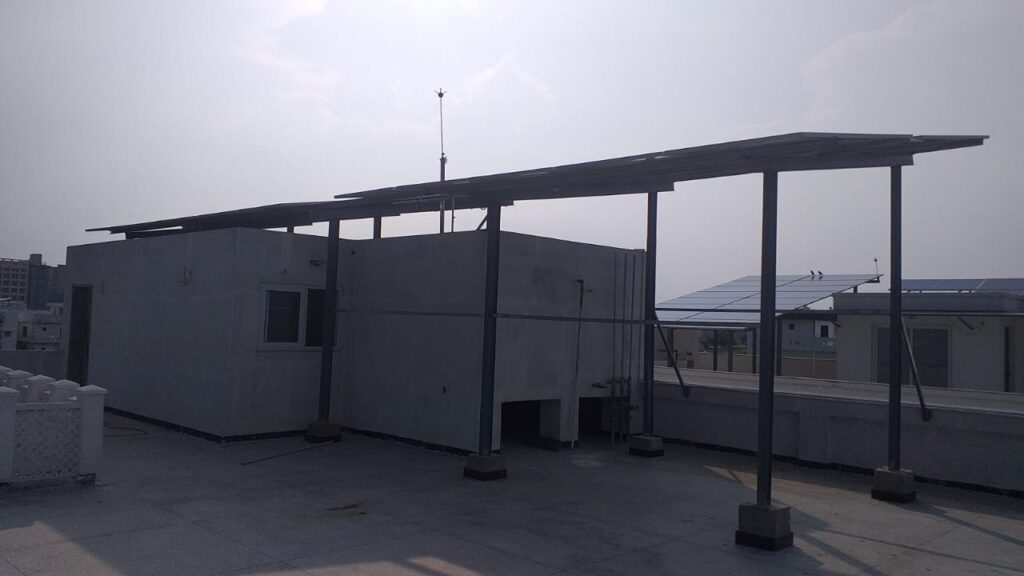
How Much Power Does a 10kW Solar System Produce in Karachi?
In Karachi, a 10kW solar system can generate an average of 42-48 kWh of electricity per day, amounting to 1200 to 1400 monthly units. Karachi’s solar irradiation levels align with the national average, making it a promising location for solar power. Also, if your area experiences frequent load shedding, we recommend installing a hybrid solar system.
How Much Power Does a 10kW Solar System Produce in Lahore?
10kW solar systems in Lahore can produce an average of 48 kWh of electricity per day, similar to the power production potential in Islamabad. Lahore benefits from favorable solar conditions with an average solar irradiation of 5.4 kWh/m2/day.
How Much Power Does a 10kW Solar System Produce in Peshawar?
A 10kW solar system in Peshawar can generate an average of 44-48 kWh of electricity per day. Peshawar’s average solar irradiation of 5.3 kWh/m2/day makes it an ideal location for solar system installations.
How Much Power Does a 10kW Solar System Produce in Quetta?
In Quetta, a 10kW solar system can produce an average of 36-44 kWh of electricity per day. Quetta receives an average solar irradiation of 5.1 kWh/m2/day, and during summer, it can surpass the power generation potential of Islamabad.
Please note that these figures should only be taken as estimates and not the final figures. The actual power generation may vary based on specific factors and seasonal variations in sunlight availability. If you want us to estimate the power generation of 10kW for your home, please contact us; we will gladly help you.
| You May Like to Read: Comparing Solar Installation Types: On-Grid vs. Off-Grid vs. Hybrid Solar |
What Can You Run with a 10kW Solar System?
A 10kW solar system can power a wide range of appliances in a typical home or business. It can support 7 fans, 15 lights, 2 1.5-ton or 3 1-ton air conditioners (not continuously), 2 microwaves, 1 iron, 2 refrigerators, 3 LED TVs, 2 washing machines, 2 PCs, and more.
You can run more appliances on a 10kW solar system too. Just keep in mind that the instantaneous load must not reach the threshold beyond which it cannot bear. That means, if everything is switched off, you can also run more than 2 air conditioners. But do consult your installer about what can you power – they will guide you in detail about how to work with a 10kW solar system once it is installed.
The capacity to run these appliances depends on the solar panel’s efficiency, sunlight availability in the area, and the appliances’ usage patterns.
How to Maximize the Power Output of Your 10kW Solar System?
To optimize the power output of your 10kW solar system, consider the following measures:
- Select high-quality solar panels with higher efficiency ratings. Investing in quality solar panels and avoiding substandard components, such as inverters, switches, etc., is important for optimal performance.
- Ensure proper panel orientation and tilt angle. Professional installers can handle this task effectively.
- Regularly clean and maintain the panels to remove dust or debris.
- Monitor system performance to identify any issues or inefficiencies. If you encounter any problems, immediately contact your solar installer, as faulty equipment can affect the performance of the entire system.
- Choose an appropriate installation location to minimize shading. If your solar panel array is exposed to shading, then no matter the efficiency of the solar panels, your system will perform below the recommended line.
That’s it!
How Much Power Does a 10kW Solar System Produce in Pakistan? Wrapping Up
With a 10kW solar system, you can generate 1000 to 1500 units of electricity per month. While the upfront cost of 10kW may be higher, the long-term savings are substantial. The shorter payback period makes it a cost-effective solution for large homes and medium-sized businesses. It reduces electricity bills, enhances energy independence, and contributes to environmental preservation.
